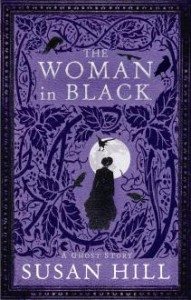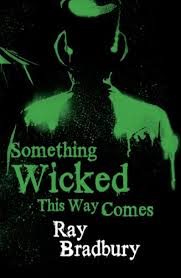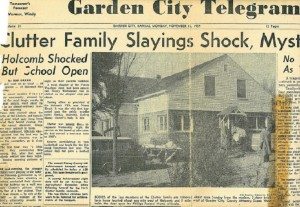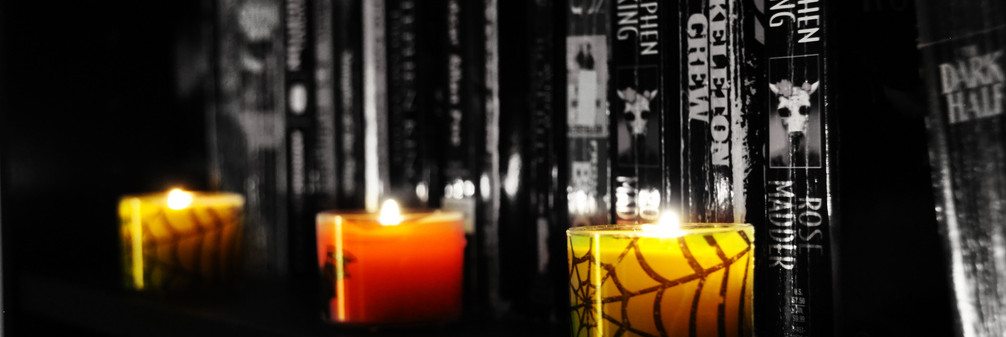Stories to make your blood run cold
The Woman in Black by Susan Hill
 Before reading The Woman in Black, I had never thought that words on a page could scare me. Put me in front of a typical horror like Paranormal Activity, however, and I would be absolutely petrified. I did not expect this little novella to frighten me in the way that an image on a screen could.
Before reading The Woman in Black, I had never thought that words on a page could scare me. Put me in front of a typical horror like Paranormal Activity, however, and I would be absolutely petrified. I did not expect this little novella to frighten me in the way that an image on a screen could.
The Woman in Black has all the characteristics of the kind of book which can be read quickly and without much afterthought. Hill creates an atmosphere using Dickensian tropes that have been used time and time again. This ranges from the foggy London which could have been lifted directly from Bleak House, to the names of her characters – ever met anyone with a name like Jennet Humfrye? To add insult to injury, the novel begins on a Christmas Eve, not quite on a ‘dark and stormy night’, but the weather is indeed dismal. Through the use of tried and tested Victorian Gothic tropes, Hill lulls the reader into a false sense of literary security.
Arthur Kipps, a junior solicitor in London, is sent to the town of Crythjn Gifford to settle the affairs of the recently deceased Alice Drablow. As a result of this, he is to search her home for documents; the curiously named Eel Marsh House, entirely cut off from the mainland, as it is surrounded by a bog.
How exactly does Hill terrify her readers? It is not, as the 2012 film would have you believe, with jumps and hair-raising screams
The Woman in Black creates a situation of deep, intense anxiety and isolation. This is primarily accomplished by the fact that Eel Marsh House, due to tidal patterns, is only accessible at certain times of the day, leaving Kipps frequently stranded in the house. As if this wasn’t bad enough, the spectre of Jennet Humfrye haunts the house, and toys with Arthur Kipps as if he were a mouse in a cage. Her horrifying appearance combined with her vengeful purpose is enough to make her presence haunt the mind of the reader long after the novel is finished.
If jump scares and adrenaline rushes are your thing, The Woman in Black might not be for you (though the 2012 film certainly provides both). However, Hill’s quietly threatening imagery permeates the entire novel. This creates a chilling kind of atmosphere that Paranormal Activity cannot hope to achieve.
Bethan Erasmus
Something Wicked This Way Comes by Ray Bradbury
 “First of all, it was October, a rare month for boys.”
“First of all, it was October, a rare month for boys.”
No writer captured the magical quality of Halloween better than Ray Bradbury in Something Wicked This Way Comes. His control of language was masterful, especially when moulding atmosphere. His words are poetry in prose; the spookiness is palpable. Bradbury’s fluidity with genre is particularly striking, writing everything from fantasy, horror, realism and science fiction, all in one text! Despite a somewhat slow start, the novel soon throws the reader into a thrilling nightmare world, whilst retaining a leisurely, even lyrical, style.
In its essence, this is a story about boyhood. Bradbury captures the thirteen year old mind-set brilliantly. The protagonists, Jim and Will, are boys seeking adventure, but get out of their depth when they explore a travelling carnival of freaks. They must face a supernatural power that is completely beyond their control – a force which even Will’s father seems unable to defeat (and what could be scarier to a child than that?). In my opinion, Bradbury presents one of the greatest fathers in literature: an older man who is a boy at heart, something the author said of himself.
The supernatural carnival grants people’s most secret desires, at a sinister cost
The carnival allows the novel to tackle the theme of age: the father could go back to being a child, but must learn to come to terms with his true self. Unsurprisingly from the author of Farenheit 451, it’s also a story about books. The most riveting scenes occur in a library, and literature plays a role in defeating the villain of the story.
Something Wicked’s antagonist is truly terrifying. The Illustrated Man, or Mr. Dark, is a hellish figure who appears in previous short stories by Bradbury. Sporting a black suit and tattoos of his victims, he genuinely freaked me out. Fortunately, as with all good stories, good will always prevail over evil.
Ray Bradbury was one of the masters of horror and science fiction literature. He was a major influence for authors such as Neil Gaiman, and Something Wicked bears many similarities to Gaiman’s The Ocean at the End of the Lane – another brilliant October read. You owe it to yourself to read a scary book this Halloween, and no writer communicates the holiday’s spooky atmosphere like Ray Bradbury.
Oliver Neil-Smith
Dark Matter by Michelle Paver
Scary books do not appeal to me at all. I can half-understand the allure of horror films when you are in a big group of friends because it is fun to be scared together (although I’d much rather a Hugh Grant flick than a horror movie). Dark Matter by Michelle Paver is the only book that I have read that I would class as “scary”. It was picked for Book Club when I was in Sixth Form and, whilst it terrified me, I cannot deny it is a brilliant book.
 Paver’s novel tells the story of Jack who, in 1937, goes on an Arctic science expedition to a small camp to work as a wireless operator. The Arctic summer is over much too quickly, bringing the long, dark days which never seem to end. Slowly, those who have accompanied Jack must leave, one by one. There are two options: to stay or to go and it must be made before the sea freezes, which will mean no way out. Hostility pervades the novel, recognisable in the people as well as the surroundings.
Paver’s novel tells the story of Jack who, in 1937, goes on an Arctic science expedition to a small camp to work as a wireless operator. The Arctic summer is over much too quickly, bringing the long, dark days which never seem to end. Slowly, those who have accompanied Jack must leave, one by one. There are two options: to stay or to go and it must be made before the sea freezes, which will mean no way out. Hostility pervades the novel, recognisable in the people as well as the surroundings.
Paver’s “dark magic” is through the atmosphere she builds up, which is arguably the most important part of a scary book. Beginning only with slight paranoia, the tension and suspense gradually builds up so that before you realize it, you are terrified. Chillingly real, it is difficult to remember that what you are reading is fictional.
The narrative, too, adds to the truth that seems present in this speculative fiction. We read the tale through Jack’s journals, bringing more ambiguity into an already uncertain and dark situation and this leaves us worrying for our narrator. With gaps here and there in the narrative, the reader is forced to imagine the worst, the best tool in an author’s kit to create an atmosphere of fear.
One piece of advice, speaking from experience: do not read it at night before you go to sleep
Karishma Jobanputra
In Cold Blood by Truman Capote
 In Friends, Joey is famously so frightened by Stephen King’s The Shining that he is forced to store the book in the freezer in a bid to banish it from his thoughts. This idiosyncrasy used to seem ridiculous to me. However, it wasn’t long after beginning In Cold Blood that I found myself ‘accidentally’ leaving the book in my car.
In Friends, Joey is famously so frightened by Stephen King’s The Shining that he is forced to store the book in the freezer in a bid to banish it from his thoughts. This idiosyncrasy used to seem ridiculous to me. However, it wasn’t long after beginning In Cold Blood that I found myself ‘accidentally’ leaving the book in my car.
In Cold Blood is a journalistic account of the 1959 murder of the Clutter family in deepest Kansas. It is chilling, gripping and frightening, not least because it is a true story. After noticing a short article in the New York Times, Capote spent seven years immersed in the Clutter story, amassing over 8,000 notes from interviews with local residents and the killers themselves.
The text opens by acquainting us with the habits, dispositions and backgrounds of both the Clutter family and their murderers. These characters, and the Kansas landscape that surrounds them, do not seem confined to the page. It is only once this life-like sense is established that Capote gives the reader a full version of the night of the murders in its gruesome reality.
At this point in the novel, my copy mysteriously began spending lots of cold nights in my Fiat Panda
The most haunting sequence is when patriarch Herbert Clutter is convinced that the two men have broken in solely to commit a robbery. As a reader, we know different. The police later discover his daughter, Nancy’s, precious gold watch hidden in a shoe, in an attempt to protect it from the ‘robbers’. The systematic murder of each member of the family, and the discovery of their bodies, is excruciating; Capote even describes the pattern of the blood splattered from the family’s gunshot wounds. The initial emphasis on the Clutter’s normality is a constant reminder that this could have happened to any family, perhaps even your own.
Although I often cite it as one of my favourite books, I have only read In Cold Blood once. The prospect of having to go and fetch it from my car again is somewhat off-putting.
Izzy Stevenson
Image Credits: Header (Flickr/ZombieSylvie), Image 1 (susanhill.com), Image 2 (pageplucker.com), Image 3 (Flickr/Wapster), Image 4 (murderpedia.com).

Comments (1)
So you are a book site and you haven’t given credit to the image in the banner on this page, which is this: https://www.flickr.com/photos/smengvall/6206589744/in/dateposted/
It is a creative commons picture, which can be used as long as you give credit. Which you haven’t.